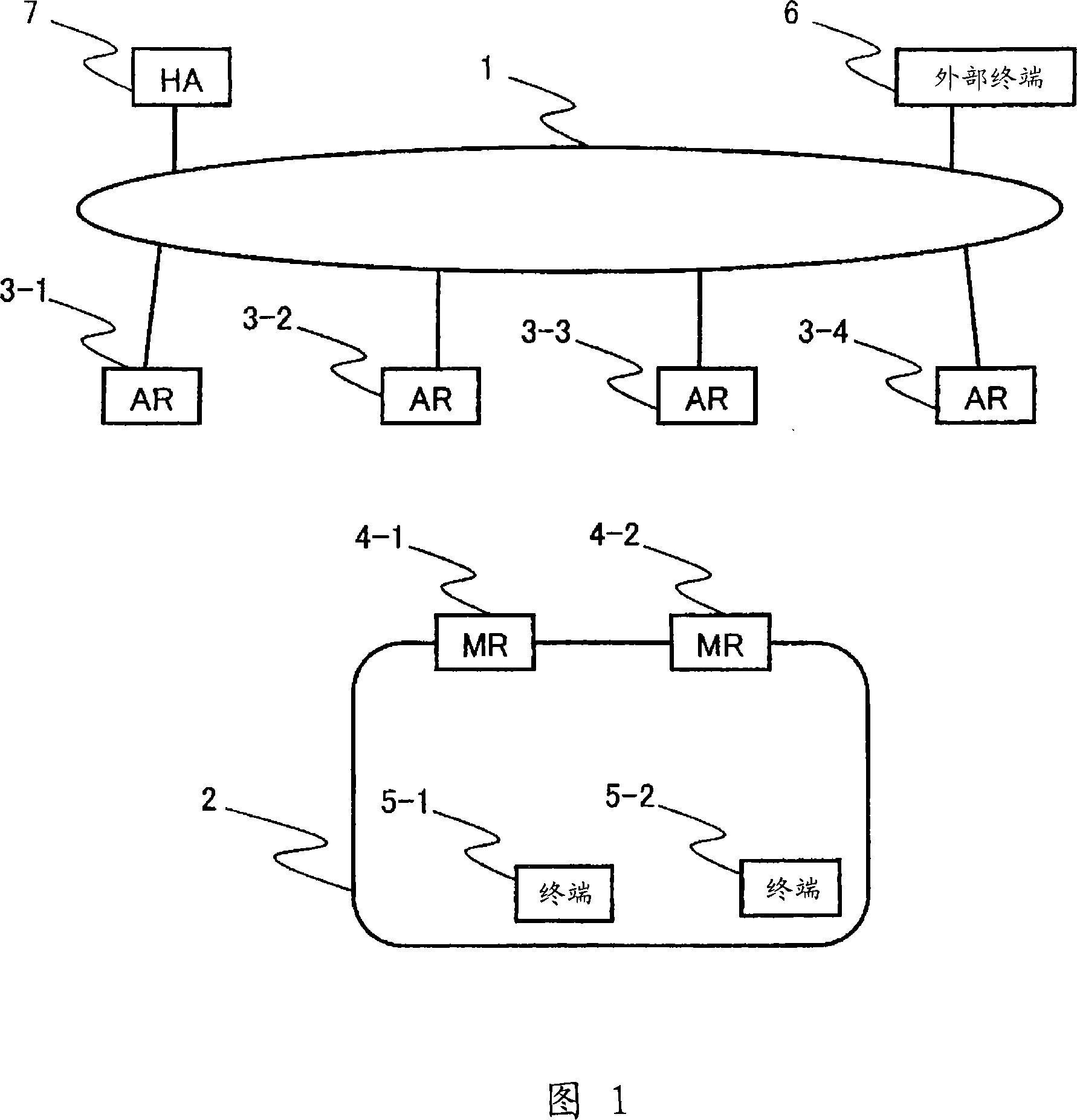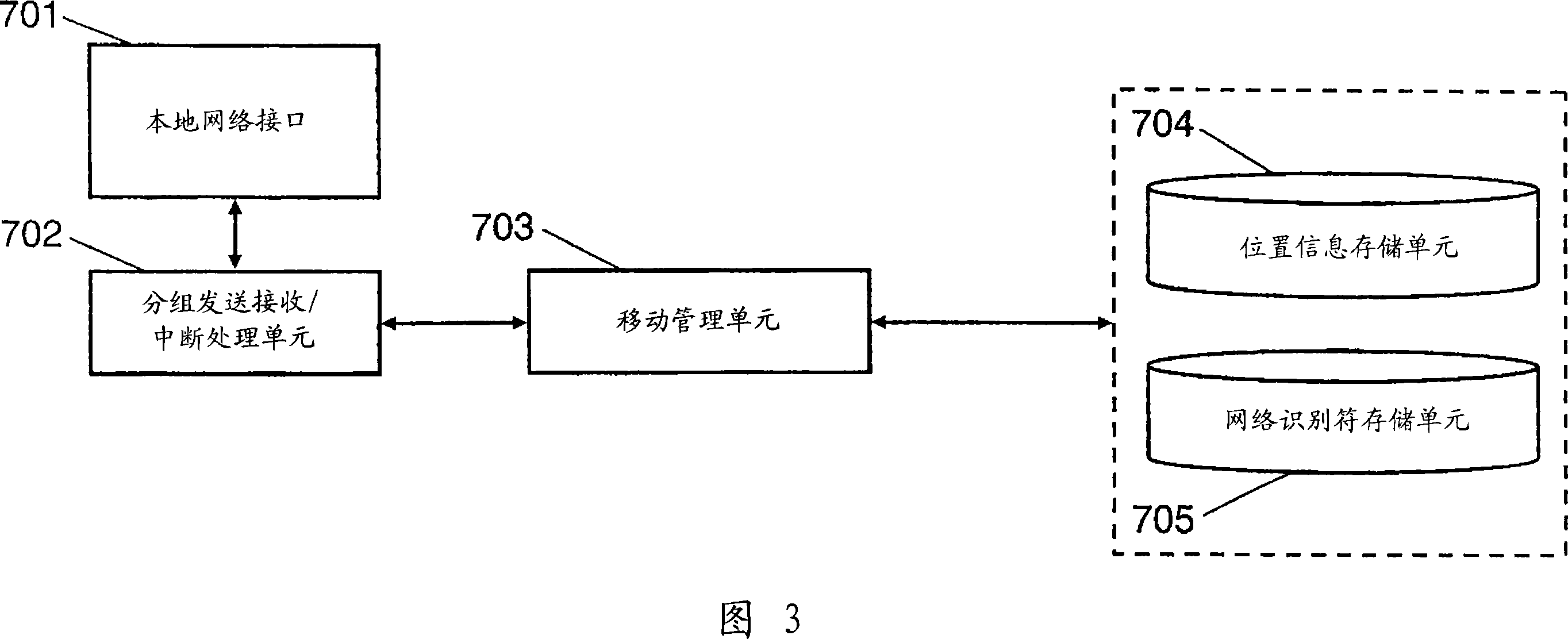Network identifier sharing method, and mobile router
A network identifier and router technology, applied in network topology, wireless network protocol, data exchange network, etc., can solve problems such as inability to transmit
- Summary
- Abstract
- Description
- Claims
- Application Information
AI Technical Summary
Problems solved by technology
Method used
Image
Examples
Embodiment approach 1
[0096] FIG. 1 is a diagram showing the configuration of a mobile network system according to Embodiment 1 of the present invention.
[0097] In FIG. 1, a mobile network 2 is constituted by mobile routers (MR) 4-1, 4-2 and terminals 5-1, 5-2. Also, in an external network (such as the Internet) 1 are connected a home agent 7 that manages the location of the mobile network, access routers (AR) 3-1 to 3-4 that make connections with the mobile network, and an external terminal 6 .
[0098] In addition, in this embodiment, there are two mobile routers, but it is not limited thereto. In addition, the access routers 3-1 to 3-4 have wireless or wired interfaces such as cellular and wireless LAN connectable to the mobile router, and the internal link connected to the mobile router may be either wired or wireless.
[0099] Next, the configuration of the mobile router of the present invention will be described with reference to the drawings.
[0100] FIG. 2 is a diagram showing the conf...
PUM
 Login to View More
Login to View More Abstract
Description
Claims
Application Information
 Login to View More
Login to View More - R&D
- Intellectual Property
- Life Sciences
- Materials
- Tech Scout
- Unparalleled Data Quality
- Higher Quality Content
- 60% Fewer Hallucinations
Browse by: Latest US Patents, China's latest patents, Technical Efficacy Thesaurus, Application Domain, Technology Topic, Popular Technical Reports.
© 2025 PatSnap. All rights reserved.Legal|Privacy policy|Modern Slavery Act Transparency Statement|Sitemap|About US| Contact US: help@patsnap.com



